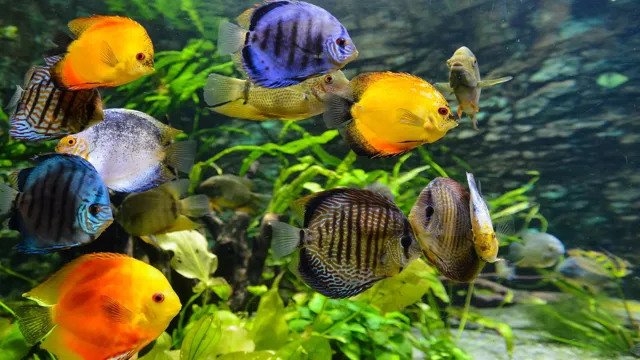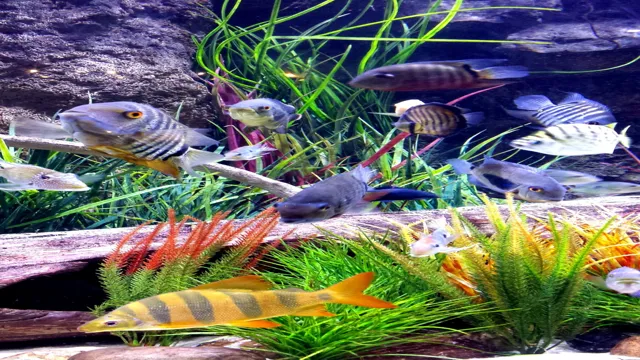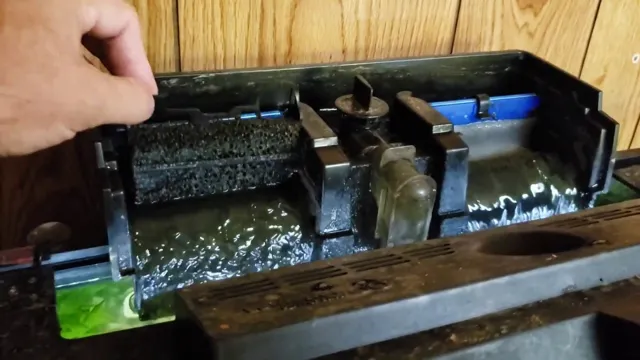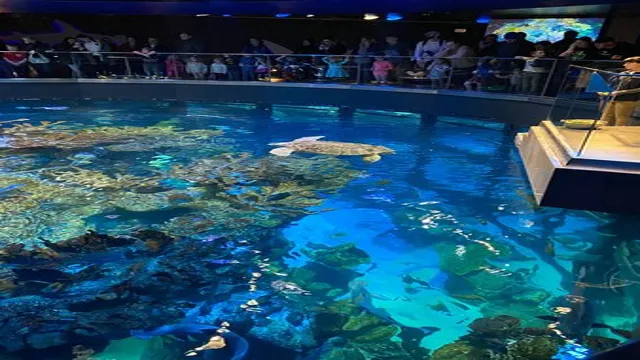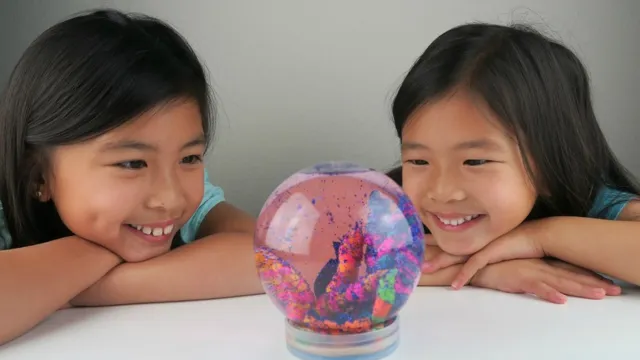How to Keep Aquarium Plants in Sand: The Ultimate Guide for Thriving Aquatic Greenery
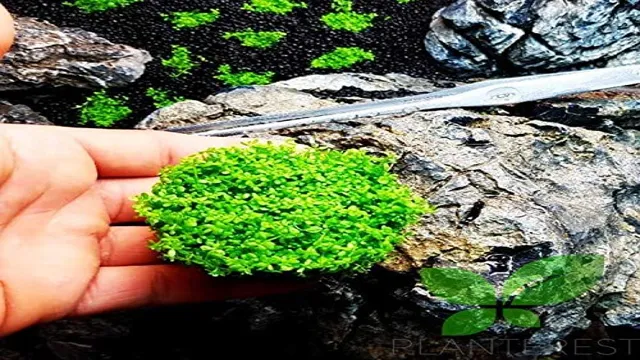
Are you considering adding live plants to your aquarium, but aren’t too sure about which substrate to use? While gravel and substrate can work just fine, aquarium plants in sand have become increasingly popular for good reason. Not only does it give your aquarium a more natural look, but sand provides a better root environment for plants to thrive and grow. Aquarium plants, just like plants on land, require good soil for proper growth.
Sand provides a porous environment for roots to take hold and access the necessary nutrients and oxygen. This is especially important for plants with delicate roots that can be easily disturbed by coarser substrates. Additionally, sand has a lower density than gravel, meaning less compaction and more oxygen flow to the plant roots.
With proper lighting and fertilization, plants in sand can grow faster and healthier, creating a beautiful and natural habitat for your aquatic pets. As you consider adding aquarium plants to your tank, keep in mind the many benefits of using sand as a substrate. Your plants will thank you, and your aquarium will look beautiful and healthy in return.
Benefits
If you’re a fan of aquascaping and keeping aquariums, then you know how important it is to keep your plants healthy and vibrant. One of the ways to do this is to learn how to keep aquarium plants in sand. Sand provides a stable base for plants to root in and can create a natural-looking habitat for aquatic life.
The key to keeping plants healthy in sand is to ensure that you have the right type of sand and provide sufficient nutrients to your plants. Choose sand that is specifically designed for aquariums and avoid using any sand that may contain harmful chemicals. You can also fertilize your plants with root tabs or liquid fertilizers to provide them with the necessary nutrients.
By learning how to keep aquarium plants in sand, you can create a beautiful and healthy aquatic habitat for your beloved fish.
Improved Root Growth
One of the benefits of using organic fertilizers is improved root growth. When plants receive the proper nutrients, their root systems can grow stronger and deeper, allowing for better absorption of water and nutrients from the soil. Organic fertilizers contain natural ingredients that provide a slow-release of nutrients that prevent root damage and promote healthy growth.
Unlike chemical fertilizers, which can burn and damage roots, organic fertilizers improve soil structure, which allows roots to penetrate deeper and gather nutrients more efficiently. With improved root growth, plants will be able to withstand drought and other environmental stressors, ensuring a healthy and thriving garden. By using organic fertilizers, gardeners can be confident that they are promoting a sustainable and healthy environment for their plants.
So, whether you are growing fruits, vegetables or flowers, the benefits of organic fertilizers are worth considering.
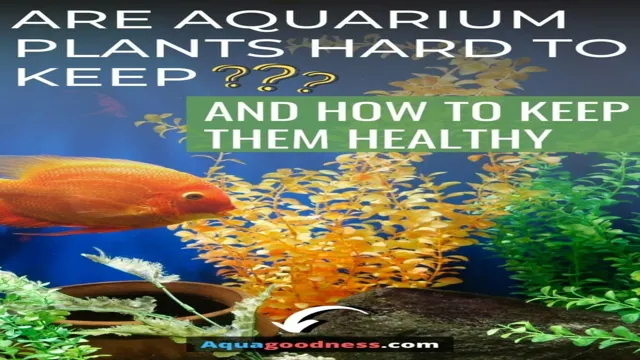
Natural Appearance
One of the biggest benefits of a natural appearance is the confidence that comes with it. When we look natural, we feel comfortable in our own skin and don’t worry about the judgment of others. This sense of confidence can be a game-changer, allowing us to be more outgoing and take risks we might otherwise avoid.
In addition to boosting our self-esteem, a natural appearance can also have a positive effect on our health. By avoiding harsh chemicals and heavy makeup, we can reduce the risk of irritation or adverse reactions. And when we focus on enhancing our natural beauty, rather than covering it up, we allow ourselves to grow in a more organic and authentic way.
So if you want to feel great in your own skin, embrace a natural appearance and let your true beauty shine through.
Preparation
Are you wondering how to keep aquarium plants in sand? Well, the first step is preparation. Make sure you choose the right type of sand that is suitable for aquatic plants. Use a fine-grained sand that won’t compact, which can result in suffocating the plants.
Avoid using any sand that is treated with chemicals or dyes, as this can harm the plants and marine life. It’s essential to wash the sand thoroughly to remove any debris or dust before adding it to the aquarium. Once the sand is ready, you need to create a nutrient-rich substrate to promote plant growth.
Add a layer of organic potting soil or specialized substrate underneath the sand to provide adequate nutrition for the plants. Adding fertilizer tabs can also aid in supporting the plants’ growth. Finally, place the plants carefully into the substrate by gently burying their roots a few centimeters into the sand.
Following these preparation steps will help keep your aquarium plants healthy and thriving in the sand.
Choose the Right Sand
When it comes to preparing a surface for sanding, choosing the right sand is crucial. Not all sand is created equal, and using the wrong type can result in an uneven finish or damage to the surface. One important factor to consider is the grit size of the sandpaper.
Coarse-grit sandpaper is best for removing heavy layers of paint or varnish, while fine-grit sandpaper is ideal for finishing and smoothing. Additionally, it’s important to choose sandpaper with a backing that is appropriate for the task at hand. For example, if you’re sanding a curved surface, using sandpaper with a flexible backing will make the process much easier.
By taking the time to choose the right sandpaper for your project, you’ll be able to achieve a beautiful and long-lasting finish.
Wash the Sand Thoroughly
“Sand washing” To prepare for a fun day at the beach, you’ll want to make sure that you wash all of the sand that comes with it. Sand can be gritty and dirty, so it’s important to wash it thoroughly to avoid any discomfort or irritation. To start, find a large bucket or basin that can fit all of the sand that you’ve collected.
Fill the container with water and allow the sand to settle at the bottom. Once the sand has settled, carefully pour off the water while keeping the sand at the bottom. Repeat this process several times until the water runs clear.
You may also want to consider using a sieve to help remove any debris or larger particles that may have collected in the sand. By washing the sand thoroughly, you can ensure that your beach day is comfortable and enjoyable, without any unnecessary sand discomfort or irritation.
Add Essential Nutrients
Adding essential nutrients to your diet is a surefire way to improve your overall health and wellbeing. But in order to do so, you need to prepare your meals carefully. It’s important to focus on whole foods that are rich in vitamins, minerals, and other important nutrients.
Stock up on fresh fruits and vegetables, lean sources of protein like chicken and fish, and whole grains like quinoa and brown rice. When preparing your meals, aim to include a wide variety of different ingredients to ensure that you’re getting a balanced mix of nutrients. You might also want to consider incorporating dietary supplements into your routine, such as multivitamins or omega-3 fatty acids.
With a little bit of planning and preparation, it’s easy to add essential nutrients to your diet and improve your health in the process.
Planting
Keeping aquarium plants in sand can be a bit tricky, but with the right knowledge, you can create a thriving underwater garden. First things first, make sure you have a proper substrate. Sand is a great option, as it allows for good root development and looks natural.
However, it’s important to choose a sand that is specifically designed for aquariums, as regular beach sand can contain harmful chemicals. When planting the plants, be sure to gently remove any excess soil from the roots and plant them at the appropriate depth. It’s also crucial to regularly fertilize your plants and provide adequate lighting.
Pay close attention to the specific needs of each plant species to ensure optimal growth. With a little bit of care and attention, you can keep your aquarium plants healthy and happy in sand.
Create Holes in the Sand
Planting holes in the sand is a fun and effective way to help your plants thrive at the beach. The process is simple and creates much-needed spaces for your plant’s roots to grow and absorb nutrients. First, you’ll need to find an area of sand where you want to plant.
Then, use a small shovel or digging tool to create a hole in the sand, about 6-8 inches deep, depending on the size of your plant. Fill the hole with a good quality potting mix and plant your seedling, making sure to water it immediately after planting. These holes will help retain moisture and protect your plants from the harsh sun and salt spray.
Plus, they create a unique and eye-catching landscape that’s perfect for any beach-loving gardener. So, grab your tools and start planting your way to a beautiful and thriving beach garden.
Plant Carefully
When it comes to planting, it’s important to be careful. Whether you’re starting a new garden or transplanting existing plants, a little extra care goes a long way. First, make sure you’re planting in the right spot.
Choose an area that gets the right amount of sunlight for the plants you’re putting in. Too much or too little sunlight can be harmful. Make sure the soil is healthy and well-draining by adding compost or sand if necessary.
When planting, be gentle with the roots of the plant. Spread them out in the hole and cover with soil, making sure not to pack it down too firmly. Water the plant thoroughly, but be careful not to overwater.
Keeping these things in mind will help ensure that your plants thrive and grow healthy and strong. So, take your time and plant carefully – your plants will thank you!
Maintenance
So, you’ve decided to have a planted aquarium with sand as a substrate. Great choice! Aquarium plants in sand can be stunning and it’s relatively easy to maintain them. However, there are a few things you need to keep in mind to keep your aquarium plants healthy and thriving.
One of the most important things is to make sure your plants have enough nutrients and carbon dioxide. You can add a liquid or substrate fertilizer to give your plants the nutrients they need. Additionally, you can add CO2 injection to help maintain a healthy tank.
Another thing you need to do is to make sure your sand substrate stays loose and aerated. This is important as it will allow your plants’ roots to grow and spread. If the substrate becomes compacted, it will be harder for your plants to get the necessary nutrients.
Therefore, it’s crucial to regularly vacuum your sand substrate to keep it loose and free from debris. With these simple steps, you can keep your aquarium plants in sand looking their best while keeping your tank healthy and thriving.
Conclusion
In conclusion, keeping aquarium plants in sand is not rocket science, but it does require some care and attention to detail. You have to make sure that the sand is of the right consistency, that your plants are getting enough nutrients and light, and that you’re not overloading the tank with too many fish. But with a little bit of effort, you can create a vibrant and beautiful aquatic ecosystem in your own home.
So, why not dive in and give it a try? Your fish (and your inner green thumb) will thank you!”
FAQs
What are the benefits of keeping aquarium plants in sand?
Sand provides excellent support and stability for root growth and can help keep plants upright. It also helps to anchor plants and prevent them from floating or uprooting.
How do you prepare sand for aquarium plants?
Wash the sand thoroughly before adding it to your aquarium. This will remove any impurities and excess debris that could harm the plants or the fish.
Can sand be too heavy for aquarium plants?
Yes, if the sand is too heavy, it can compact too tightly and restrict root growth. Use a slightly coarser sand that allows for good drainage, or mix in some gravel or soil to improve drainage.
What types of plants prefer sand substrate?
Many aquatic plants prefer sandy substrate, including Java fern, Java moss, and Amazon sword.
What should you consider when choosing sand for your aquarium plants?
Consider the color, texture, and size of the sand as well as the needs of your plants. It should be fine enough for roots to grow through but not too small that it compacts too tightly.
How deep should the sand be for aquarium plants?
The sand should be at least 2-3 inches deep, but no more than 4 inches, to allow for good root growth and oxygen flow.
How often should I replace the sand in my aquarium?
It’s not necessary to replace the sand unless it starts to break down or becomes contaminated. You can remove and wash a portion of the sand during routine aquarium maintenance to keep it clean.

